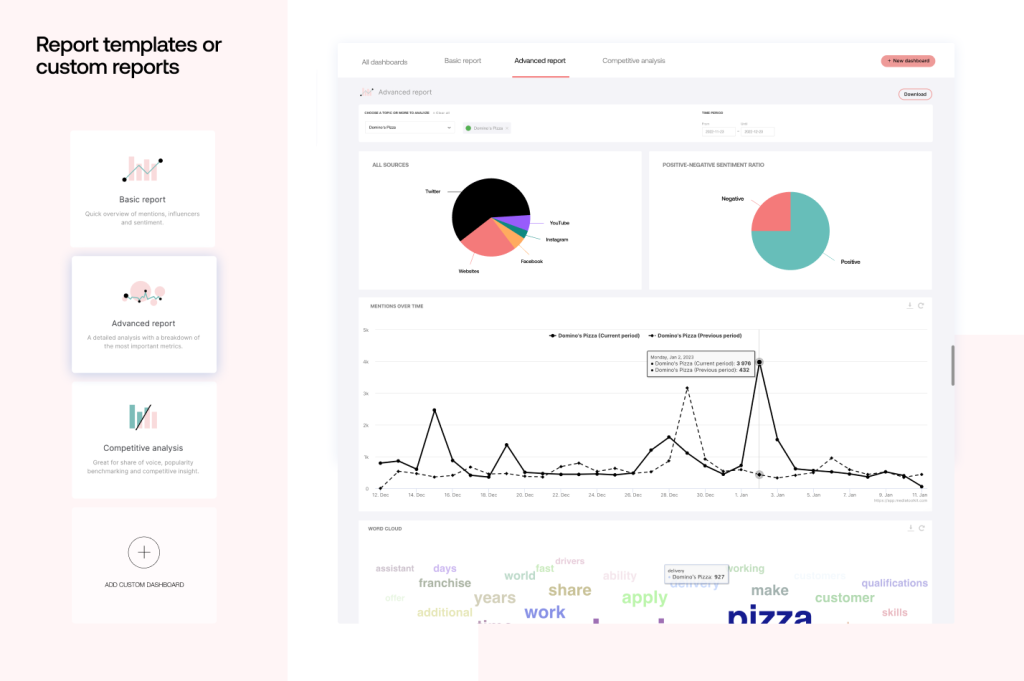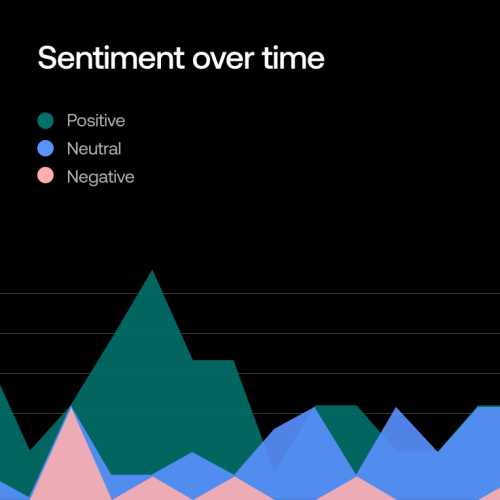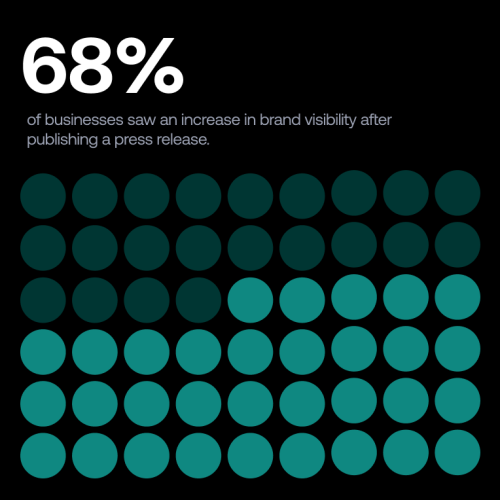In today’s fast-paced and constantly evolving media landscape, staying up-to-date with the latest news and conversations relevant to your brand or client can be a daunting task.
However, effective media monitoring is a crucial part of any successful public relations strategy.
? Read Digital PR Explained: Best Strategies and Tools
By tracking media coverage, social media conversations, and other relevant sources of information, PR professionals can gain valuable insights and make informed decisions about how to respond to a given situation or opportunity. But how to use a media monitoring tool most effectively depending on your PR role?
In this blog, we’ll explore the importance of media monitoring for PR professionals, and we’ll go a bit further and explore different ways PR professionals can make the most of it depending on their role. Whether you are a seasoned PR professional or just starting out, understanding the value of media monitoring can help you stay ahead of the curve and succeed in your role.
Let’s dig in!
Benefits of Media Monitoring for PR
With its range of features, media monitoring can provide numerous benefits to all public relations (PR) professionals.
- It allows you to stay on top of the news. You can find out the latest news and trends in your industry easily, as well as breaking news that may impact your clients or organization.
- Identifies media opportunities. Media monitoring identifies potential media opportunities for your clients, such as journalists who are writing about topics related to your clients’ expertise.
- Measures the effectiveness of PR campaigns. By monitoring media coverage of your clients, you can measure the impact of their PR campaigns and adjust their strategies as needed.
- Enables you to respond to negative comments on time. Media monitoring allows you to quickly identify negative coverage of your clients or organization and respond appropriately.
- Identifies influencers. Media monitoring can help you identify influencers in their industry who may be able to help promote your clients or organization.
- Analyzes competitors. It provides insights into the media coverage of competitors, helping you to understand your strengths and weaknesses and adjust your own strategies accordingly.
Overall, media monitoring can help PR professionals to be more strategic, proactive, and effective in their work, ultimately leading to better outcomes for their clients or organization.

How Media Monitoring Helps Particular PR Professionals in Their Everyday Work
But not all PR professionals use media monitoring the same way. This mainly depends on their responsibilities and goals. Let’s take a look at the most typical ones.
Read Staying Ahead of the Game: Why Media Monitoring is Critical for PR and Marketing Agencies
PR Agency Leader
A PR agency leader is a seasoned professional who has been in the industry for a while and has founded their own boutique or niche PR agency. Their job title can vary between Managing Partner, Founder, Owner/Director, or General Director. With a team of 10 (or fewer) employees, they rely heavily on working with subcontractors to execute their clients’ communication strategies.
Unlike PR leaders in larger companies, this persona is more hands-on and covers all aspects of planning, executing, and analyzing communication strategies, managing clients, and subcontractors. They prioritize building personal and long-term relationships with their clients over chasing growth or big numbers.
They work with both local and international clients based on their agency’s and clients’ focus. While they used to do media monitoring manually in the past, they now offer it as part of their service and use it daily to stay on top of clients’ online presence, craft better strategies, and structure reports.
Read (TEMPLATE) A guide to creating an annual communications plan
Challenges
Being a PR agency leader comes with a variety of challenges. Workload, work hours, and stress levels can become overwhelming, especially when there are numerous projects to manage simultaneously. Deadlines and time pressure can add to the stress levels, making it challenging to balance multiple projects at once.
Another challenge is dealing with demanding clients, who may have high expectations and require a lot of attention. Writing and reporting can also be time-consuming, requiring a lot of attention to detail to ensure that the information presented is accurate and effective.
Despite these challenges, PR agency leaders must find ways to manage their workload effectively and provide high-quality service to their client. This is where media monitoring comes into play as a valuable asset.

Use Cases
For an agency leader, a media monitoring tool provides valuable insights and data that can be used to inform and optimize their strategies. An agency leader can also benefit in terms of client reputation management, allowing them to quickly identify and respond to any negative coverage or sentiment that could damage their clients’ reputation. In this sense, it’s an indispensable tool in crisis management since it gives you an opportunity to react to a crisis on time.
For example, one bad comment on a forum can cause an avalanche of negativity that can cause severe reputation damage. Media monitoring tool Determ allows you to detect these moments very quickly.
When there is a spike of negative sentiment on the sentiment chart, this is a good moment to take a look at the mentions and check what is being said about you or your clients.

Working as an agency leader means that there will be a lot of market research and brand audits, providing information about competitors, industry trends, and consumer sentiment. This data can be used to develop more effective communication strategies and improve brand positioning.
For example, let’s imagine you have a client from the beauty industry and you need to come up with their new campaign for Vitamin C serum on social media. You can use Determ to track other ingredients or products that are commonly used in the same context with Vitamin C. Ultimately, you can use this information in your campaigns and create content around these topics, which will resonate with the audience much better.

Finally, media monitoring can be used for analysis and reporting, providing valuable insights into the effectiveness of PR campaigns and helping to demonstrate ROI to clients.
PR Department Leader
The PR department leader is an experienced professional with a job title that can vary between PR Lead, Head of PR, Head of Communications, or PR/Comms Director. They primarily work with B2C organizations, many of which are established players in competitive markets, requiring constant improvement in brand messaging and differentiation.
Leading a small team, a PR Department Lead collaborates with external agencies and freelancers to delegate some PR tasks while communicating with other departments to stay aligned. Due to the people management and coordination responsibilities, this position leaves less time for actual work.
With extensive experience in their field, PR department leaders may search for a media monitoring tool with better coverage to accommodate organization growth or extensive campaigns and initiatives. They use media monitoring tools daily, along with their team and other departments, to stay on top of brand reputation and track the effectiveness of their PR campaigns.
Read Optimizing Your PR Budget: 5 Ways Media Monitoring Tools Can Help

Challenges
The role of a PR department lead is not without its challenges. One of the most prominent challenges is managing the workload, work hours, and stress levels. PR leads are often juggling multiple projects and campaigns simultaneously, which can lead to a feeling of overwhelm.
Additionally, last-minute tasks and changes can disrupt even the most well-planned strategies, requiring quick thinking and adaptation. Another challenge is the coordination of various team members and stakeholders, including managing people and dealing with a significant amount of paperwork and administration.
Lastly, finding a way to differentiate and get the messaging and timing right can be a tricky balance, requiring a deep understanding of the target audience and the media landscape. In all of these challenges, a great media monitoring tool is what makes a difference.
Use Cases
One crucial use case is reputation management and brand presence. Through media monitoring, PR department leads can keep track of the organization’s mentions in the media, social media, and other online platforms, helping them to respond quickly to negative feedback or reviews.
Another use case is campaign tracking, which allows PR leads to evaluate the effectiveness of a campaign and make adjustments in real-time, resulting in better outcomes. Media monitoring can also provide valuable market research insights, such as tracking industry trends, competitor activity, and customer sentiment.
Read How to Do Market Research With a Media Monitoring Tool
For example, a PR department lead in Burger King could probably make use of a report like this, after their controversial Women’s Day campaign in 2021.

Lastly, PR leads can use media monitoring to analyze and report on the success of their communication strategies, providing actionable insights for the organization’s decision-makers.
PR Specialist
A PR specialist’s job title can vary, but they typically work within the PR department of a well-established company, government organization, or NGO. With a proven track record in PR, they’ve held this position for a few years.
One of their primary responsibilities is staying up-to-date on news and events relevant to their organization, while also managing a variety of last-minute tasks and developments. They report their successes to their superior, usually a PR team lead, head of PR, or PR/communications director. While many PR specialists have previously monitored media manually, the growth of their organization has highlighted the need for better coverage and automation to decrease their workload.
As a result, once they adopt a media monitoring tool, it becomes an irreplaceable part of their daily and even hourly workflow.
Read Create an Amazing Online Media Report in Minutes (Using Our 2000 Custom Charts)
Challenges
One significant challenge is presenting company information in a comprehensive way that is easily understood by various stakeholders, including customers, investors, and the media. Another challenge is the time-consuming nature of reporting, which can take up a significant portion of their workday.
PR specialists often need to wait for other people to complete their tasks, which can result in delays and setbacks, making it challenging to meet deadlines. Additionally, PR specialists are often tasked with dealing with negative public perception, which can require a great deal of tact and diplomacy to navigate successfully.
Use Cases
One of the most important use cases is monitoring online brand presence, including owned and shared media channels. This allows PR specialists to stay informed about how the organization is perceived online, including sentiment analysis and customer feedback.
Tracking media mentions and press releases is another critical use case, providing valuable insights into the effectiveness of media outreach and the impact of PR efforts. PR specialists can also measure media performance using metrics such as Share of Voice (SOV) and the percentage of media pickup, providing valuable data for future PR campaigns.
Finally, media monitoring can provide useful analysis and reporting, allowing PR specialists to compare their organization’s performance to that of their peers or competitors and make informed decisions about their communication strategy.

Media monitoring tool Determ also offers an AI assistant called Synthia that provides a summary of the most influential mentions of the desired keyword, interprets the overall sentiment and share of voice and proposes further action steps. This is amazing as a basis for any report that needs to be delivered to decision-makers.
To Conclude
Media monitoring provides PR professionals with valuable insights into their organization’s communication strategy, including tracking media mentions and press releases, monitoring online brand presence, measuring media performance, and providing analysis and reporting. By utilizing a media monitoring tool, PR professionals can stay on top of news and events, track industry trends and customer sentiment, and make data-driven decisions to improve their organization’s reputation and communication strategy.
In this context, Determ is a powerful and versatile tool that can provide PR professionals with valuable insights into their organization’s media performance. Its ability to track media coverage, sentiment analysis, and provide real-time alerts can help PR professionals stay ahead of the curve and make informed decisions. Additionally, its user-friendly interface and automation features can help reduce the workload of PR professionals, allowing them to focus on more strategic tasks.
If you’d like to try out Determ – reach out to us, we’d be happy to show you around.






